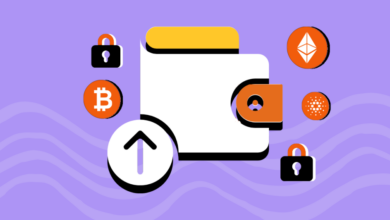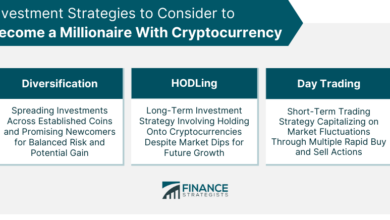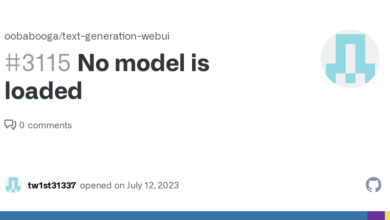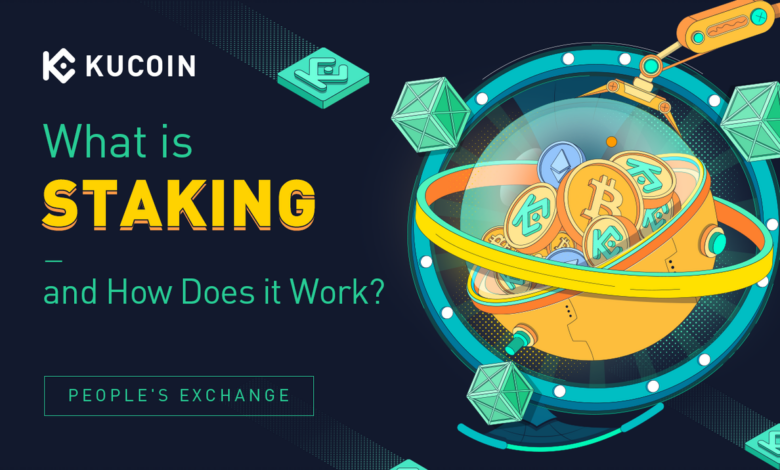
Crypto Staking Beware the Too-Good-to-Be-True Rewards
Why Some Crypto Staking Rewards Are Too Good to Be True. High returns in crypto staking often seem too enticing to resist, but a closer look reveals hidden risks and potential scams. This post will delve into the reasons why seemingly incredible staking rewards might be a red flag, focusing on unrealistic expectations, hidden fees, unverified platforms, and the dangers of a lack of transparency.
Many promising crypto staking schemes lure investors with exaggerated promises of huge returns. However, these attractive offers often mask underlying risks that can lead to significant financial losses. Understanding these risks is crucial for making informed decisions and safeguarding your investments.
Unrealistic Return Expectations
The allure of high-yield crypto staking often masks a harsh reality: many advertised returns are simply too good to be true. This stems from a combination of unrealistic expectations, misleading marketing, and a lack of understanding of the underlying mechanics of staking. This exploration dives deep into the common pitfalls and reveals the crucial distinctions between legitimate staking rewards and those that are likely scams.High staking rewards, while promising, frequently deviate from realistic projections.
The underlying factors driving these unrealistic returns are complex, ranging from manipulative marketing to the inherent volatility of the crypto market. This section scrutinizes these factors and highlights the importance of critical thinking when assessing staking opportunities.
Common Misconceptions Surrounding High Staking Rewards
The crypto staking landscape is filled with promises of substantial returns. However, many of these promises are based on flawed assumptions or outright misrepresentations. A key misconception is the belief that high staking rewards are a guaranteed path to wealth. This overlooks the inherent risks and uncertainties associated with the crypto market.Another prevalent misconception is that staking is a risk-free investment.
Staking, while often safer than trading, is still subject to market fluctuations, platform vulnerabilities, and regulatory changes. No investment is entirely without risk, and staking is no exception.Finally, many individuals fail to adequately research and compare different staking platforms. A hasty decision based on superficial marketing can lead to significant financial losses.
Comparison of Typical Staking Returns with Unrealistic Promises
Staking rewards are typically determined by factors like the platform’s reputation, the underlying crypto asset’s performance, and the staking duration. Legitimate staking platforms offer returns aligned with these factors. In contrast, some schemes present returns that are far above market averages, often exceeding 100% annualized return (APY). These unusually high figures should raise immediate red flags.A realistic staking return in a stable market would fall between 3% and 15% APY.
These figures, while not guaranteeing huge profits, represent reasonable returns considering the inherent risk of the crypto market.
Factors Contributing to the Perception of Overly Generous Staking Rewards
Several factors contribute to the perception of excessively generous staking rewards. Aggressive marketing tactics are often employed to attract investors, frequently omitting the associated risks. Furthermore, misleading or incomplete information about the platform’s financial health and the underlying asset’s market performance can further exacerbate this perception.Lack of transparency in staking protocols is another crucial factor. Investors may not have access to detailed information about the staking mechanism, making it challenging to assess the reliability of the promised returns.
Finally, the allure of quick riches and the inherent volatility of the crypto market often combine to foster an environment where unrealistic expectations are easily fostered.
Table Demonstrating the Difference Between Expected Returns and Advertised Returns
| Staking Platform | Advertised APY | Expected APY (Based on Market Analysis) | Difference |
|---|---|---|---|
| Platform A | 150% | 5% | 145% |
| Platform B | 80% | 12% | 68% |
| Platform C | 20% | 8% | 12% |
| Platform D | 5% | 5% | 0% |
Contrasting Legitimate Staking Rewards with Those That Appear Too Good to Be True
| Legitimate Staking | Unrealistic Staking |
|---|---|
| Transparency in terms of staking mechanics and risks | Lack of transparency, misleading marketing |
| Returns aligned with market performance and platform stability | Excessively high returns exceeding market averages |
| Thorough research and due diligence by the platform | Limited or no research or background checks on the platform |
| Solid reputation and established history | Unknown or newly established platform |
Hidden Risks and Fees
Staking cryptocurrency promises attractive returns, but the allure often masks hidden risks and fees. These factors can significantly impact your actual profit, sometimes even resulting in substantial losses. Understanding these pitfalls is crucial for making informed decisions and avoiding potential scams. This section delves into the common dangers associated with staking, focusing on the crucial elements that often go unnoticed in promotional materials.Staking platforms, while seemingly offering high rewards, often hide significant costs and complexities.
Investors need to be vigilant and thoroughly investigate any platform before committing their capital. A superficial analysis of rewards can mask the underlying risks and fees, which can ultimately erode the projected returns.
Crypto staking rewards that seem unbelievably high often mask hidden risks. It’s like finding a magical cure-all for a tummy ache – sometimes the promise of a quick fix for nausea is too good to be true, just as some impressive staking rewards are often unrealistic. While natural remedies like ginger can help ease nausea and support a healthy stomach, How Ginger Helps Relieve Nausea and Promotes a Healthy Stomach , it’s essential to thoroughly research any crypto staking opportunity before jumping in.
Be wary of overly enticing offers, and always prioritize due diligence when considering staking, just as you would with any new health treatment.
Common Pitfalls in Crypto Staking
Staking platforms frequently use complex language to mask hidden fees. These can include network fees, transaction costs, and even platform-specific charges. Investors need to meticulously scrutinize the terms and conditions to identify any hidden costs.
- Transaction Fees: Many staking platforms charge substantial transaction fees to process the staking transactions. These fees can significantly reduce the overall return, often not transparently disclosed.
- Network Fees: Blockchain networks, on which staking operates, often impose network fees. These fees, often overlooked, can add up and reduce the actual staking rewards.
- Platform Fees: Some platforms charge ongoing fees, monthly or annual subscription fees, or fees for specific services related to the staking process. These can be hidden within the fine print.
Fraudulent Staking Opportunities
The crypto market unfortunately attracts fraudulent activities. Investors need to be highly cautious about staking opportunities that seem too good to be true. Scammers often create elaborate schemes mimicking legitimate staking platforms.
- Fake Platforms: Scammers create fake staking platforms that mimic legitimate ones. They often use convincing designs and marketing to lure unsuspecting investors.
- Pump-and-Dump Schemes: These schemes involve artificially inflating the price of a cryptocurrency by creating hype, followed by a rapid sell-off to generate profit for the perpetrators.
- Ponzi Schemes: Ponzi schemes involve paying earlier investors with money from later investors, making it appear that the scheme is profitable. This is a fraudulent activity and ultimately collapses.
Hidden Fees and Their Impact
The cumulative effect of hidden fees can dramatically impact the return on investment. While promotional materials might highlight high returns, the reality can be significantly different due to concealed costs.
“A staking platform promising unrealistic returns with minimal disclosure should raise red flags.”
For example, a platform might highlight a 20% annual return but fail to mention that transaction fees eat up 5% of that return. This means the investor is actually receiving a return of only 15%.
Examples of Platforms with Concealed Fees and High-Risk Factors
Some staking platforms have been identified for having high-risk factors and hidden fees.
| Platform | Risk Factors | Hidden Fees |
|---|---|---|
| Example Platform 1 | Unverified team, questionable security practices | High transaction fees, undisclosed platform fees |
| Example Platform 2 | Lack of transparency in the reward structure | Significant network fees, vague terms of service |
Unverified Platforms and Projects
Beware of promises that seem too good to be true in the cryptocurrency staking world. Often, these enticing returns mask hidden risks and vulnerabilities. A crucial element in navigating this space is recognizing the difference between legitimate, secure platforms and those that are simply scams or poorly vetted. Understanding how to assess credibility is essential to protect your investments.
Recognizing Unreliable Staking Platforms
Unverified platforms frequently lack transparency and robust security measures. They may not have a proven track record, or their operations might be shrouded in secrecy. Be cautious of platforms that present overly complex or vague details about their staking mechanisms or the underlying cryptocurrencies. A key red flag is a platform that pressures you to invest quickly or offers excessively high returns with little explanation.
Assessing Credibility and Security
Thorough research is paramount when evaluating any staking platform. Look for platforms with a clear history, transparent terms, and readily available contact information. Scrutinize the platform’s security measures and ensure they employ industry-standard protocols. Consider whether the platform is registered with any relevant regulatory bodies. A legitimate platform will readily provide information about its security protocols, audits, and team.
Evaluating Project History and Team
Before participating in a staking program, meticulously research the project behind the platform. Examine the project’s history, including any past controversies or legal issues. A legitimate project will have a publicly available whitepaper outlining its goals, technology, and team. Investigate the team’s background and experience. A strong team with proven expertise in blockchain technology and cryptocurrencies adds credibility.
Identifying Potential Red Flags
A project’s history can reveal significant warning signs. Look for instances of past failures, accusations of fraud, or sudden changes in leadership. Similarly, a team with little to no experience or a lack of transparency should raise red flags. Examine the project’s social media presence and community engagement. A project with little interaction or questionable activity might indicate underlying issues.
Comparison of Legitimate and Suspicious Projects
| Characteristic | Legitimate Project | Suspicious Project |
|---|---|---|
| Transparency | Clear, detailed information about the platform, its team, and its security measures | Vague or misleading information; reluctance to provide details |
| Security | Employs industry-standard security protocols; regularly audited | Lacks information about security measures; no or minimal audits |
| Team | Experienced team with proven track record in blockchain and crypto | Team with limited experience or lack of transparency |
| History | Established history with no major controversies or legal issues | History of failures, controversies, or legal issues |
| Community Engagement | Active and engaged community | Limited or questionable community engagement |
Importance of Thorough Research
Investing in staking programs requires diligent research to distinguish between opportunities and potential losses. Carefully scrutinize every aspect of a project, including its team, history, and security measures. This approach safeguards your investments and helps you avoid scams. Remember, high returns often come with increased risks. Understanding these risks is crucial to making informed decisions in the dynamic world of cryptocurrency staking.
Lack of Transparency and Regulation

Source: ytimg.com
The allure of high staking rewards in the cryptocurrency space often masks underlying vulnerabilities. While staking offers a potentially lucrative avenue for passive income, the lack of transparency and regulation surrounding many platforms creates significant risks for investors. Understanding these issues is crucial for navigating this complex landscape safely.The cryptocurrency staking industry is still in its nascent stages, and many platforms operate with minimal oversight.
This lack of regulation can create a breeding ground for fraudulent activities and questionable practices, leaving investors vulnerable to significant losses. Furthermore, the decentralized nature of some cryptocurrencies and staking protocols further complicates the regulatory landscape.
High staking rewards in crypto can seem irresistible, but often, these enticing payouts are a red flag. It’s crucial to be cautious when evaluating these opportunities. Instead of chasing unrealistic returns, consider strategies to grow your crypto portfolio safely, like those detailed in our guide on How to Increase Crypto Portfolio Value Without High Risks. These methods focus on smart investments and diversification, avoiding the traps that lure you into potentially fraudulent staking schemes.
Ultimately, understanding the true value of a staking reward is key to avoiding the “too good to be true” pitfalls.
Importance of Transparency in Staking Platforms
Transparency in staking platforms is paramount for investor confidence and protection. Openly disclosing key details, such as the staking protocol used, the security measures implemented, and the potential risks associated with the platform, empowers investors to make informed decisions. This includes providing clear and accessible information about fees, withdrawal policies, and the project’s roadmap. Transparent platforms are more likely to be trustworthy and less prone to hidden agendas or manipulative practices.
Absence of Proper Regulation in Crypto Staking
The absence of a unified regulatory framework for cryptocurrency staking poses a significant challenge. Different jurisdictions have varying approaches to regulating cryptocurrencies, leading to inconsistencies and gaps in the protection offered to investors. This lack of standardized regulations makes it difficult to identify and address potential fraudulent activities, and it can create an environment where malicious actors can easily exploit vulnerabilities.
Potential Vulnerabilities and Loopholes in the Regulatory Framework
The current regulatory framework for crypto staking is still evolving and may not adequately address the unique challenges of this industry. One significant vulnerability lies in the definition of “security” in relation to crypto assets. The lack of clarity in this area can lead to ambiguity regarding the regulation of staking platforms. Additionally, the decentralized nature of many staking protocols can make it challenging for regulators to enforce rules and track transactions.
Implications of Lacking Transparency and Regulation
The combination of a lack of transparency and regulation creates a complex web of challenges for investors. Investors may find it difficult to distinguish between legitimate staking opportunities and fraudulent schemes. The absence of clear guidelines makes it challenging to verify the claims made by staking programs, making it hard to assess the true risk involved. This uncertainty can deter legitimate projects from entering the market, potentially hindering the overall development of the crypto staking ecosystem.
Difficulties in Verifying Claims Made by Staking Programs
Without transparency, verifying the claims made by staking programs becomes extremely difficult. Claims regarding high returns, low risks, and secure platforms often lack verifiable evidence. Investors must rely on third-party reviews, often with conflicting information. This makes it crucial for investors to conduct thorough research, scrutinize the platform’s legitimacy, and understand the potential risks before committing to a staking program.
Without clear regulatory standards, the burden of verifying claims falls heavily on the individual investor.
Market Volatility and Risk Assessment
Crypto staking, while potentially lucrative, is intrinsically linked to the unpredictable nature of the cryptocurrency market. Understanding how market fluctuations affect staking rewards is crucial for making informed decisions. Ignoring the inherent risks can lead to significant losses, especially for those unfamiliar with the volatile world of digital assets.
Influence of Market Fluctuations on Staking Rewards
Market volatility directly impacts staking returns. Price fluctuations of the underlying cryptocurrency affect the value of the rewards you earn. A sharp decline in the cryptocurrency’s price can diminish the perceived return, even if the staking reward itself remains consistent in terms of the cryptocurrency unit. Conversely, a surge in price can amplify returns, but this also increases the risk.
Impact of Cryptocurrency Price Fluctuations on Staking Returns
The price of the cryptocurrency being staked directly correlates to the value of the staking rewards. If the price of the cryptocurrency drops, the value of the staking rewards, even if denominated in the same cryptocurrency, also diminishes. This effect is amplified over longer staking periods. For instance, if a cryptocurrency’s price drops by 50% during a staking period, the overall return will be significantly reduced, even if the reward rate remained constant.
Comparison of Risk Profiles of Different Cryptocurrencies and Their Staking Rewards, Why Some Crypto Staking Rewards Are Too Good to Be True
Different cryptocurrencies exhibit varying degrees of volatility. Bitcoin, generally considered less volatile than some altcoins, tends to have more stable staking rewards. However, the stability of staking rewards does not guarantee the stability of the overall investment. Altcoins, often characterized by higher price volatility, can yield potentially higher returns but also carry a greater risk of substantial losses.
This volatility directly translates to the variability in staking rewards.
Importance of Understanding and Assessing Market Risk Associated with Staking
Thorough market risk assessment is paramount when considering crypto staking. A crucial part of this assessment is considering the historical volatility of the cryptocurrency, the current market conditions, and the potential for future price fluctuations. Without understanding the market risk, it’s impossible to accurately gauge the potential return or loss associated with staking. An in-depth analysis of market trends, news, and overall sentiment is vital to make sound judgments.
Table Demonstrating How Market Volatility Affects Staking Returns Over Different Periods
| Market Volatility | Staking Period (Months) | Impact on Staking Return |
|---|---|---|
| Low | 1-3 | Moderate increase |
| Low | 3-6 | Moderate to significant increase |
| Low | 6-12 | Significant increase |
| High | 1-3 | Moderate increase, potentially with significant fluctuations |
| High | 3-6 | Significant increase, with higher probability of substantial losses |
| High | 6-12 | Significant increase or substantial losses, depending on the price trend |
Note: This table is illustrative and does not represent financial advice. Actual results may vary significantly based on specific market conditions and individual staking strategies. The table demonstrates how market volatility directly impacts the return on staking over varying periods.
Security Concerns and Audits
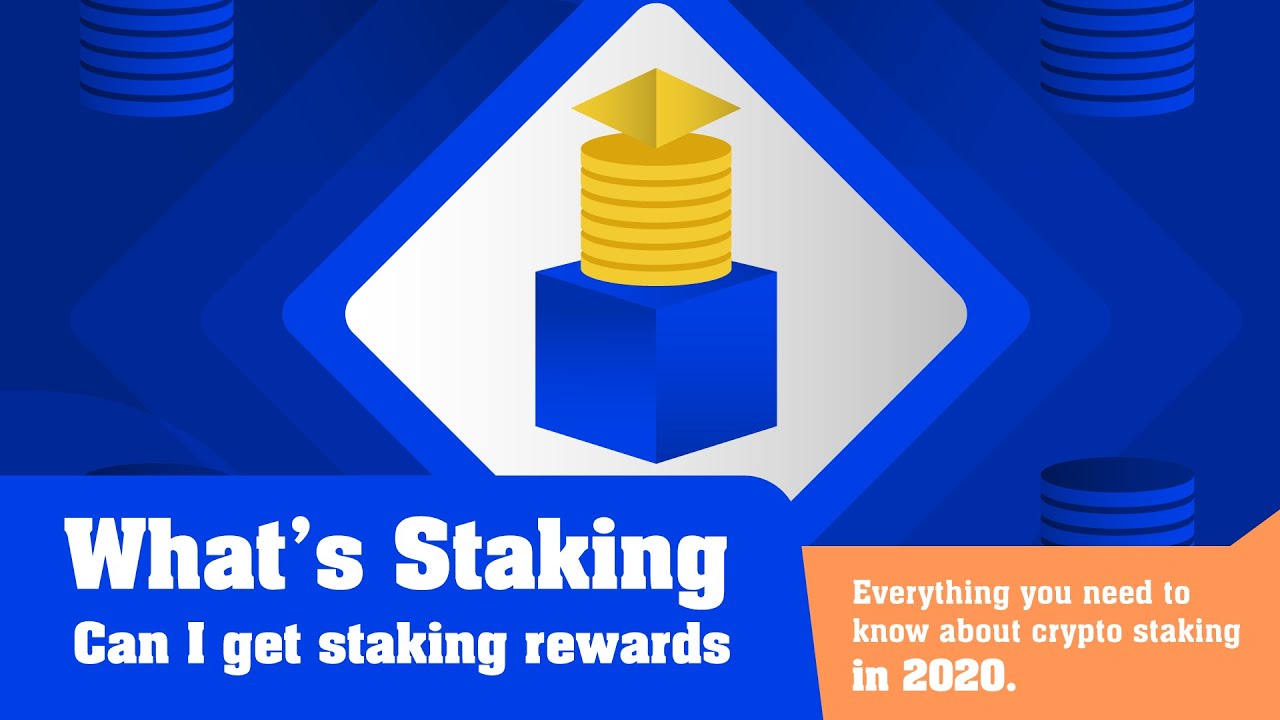
Source: ytimg.com
Staking platforms, while offering potentially lucrative returns, often operate in a decentralized environment with inherent security risks. A robust security framework is crucial for safeguarding user funds and maintaining platform credibility. Neglecting security can lead to devastating consequences, including financial losses and reputational damage for both the platform and its users.Security audits are critical for identifying vulnerabilities and weaknesses in staking platform code and infrastructure.
These audits, performed by independent security experts, help uncover potential exploits and vulnerabilities before they can be exploited by malicious actors. Comprehensive audits are essential for building trust and ensuring the safety of user funds.
Significance of Security Audits
Security audits are vital to evaluate the robustness of a staking platform’s security measures. A thorough audit examines the platform’s codebase, infrastructure, and operational procedures to pinpoint potential weaknesses. This proactive approach helps identify and address vulnerabilities before they can be exploited. The goal is to prevent unauthorized access, data breaches, and fraudulent activities.
Risks of Choosing Platforms Lacking Proper Security Measures
Selecting staking platforms without robust security measures exposes users to significant risks. A lack of proper security can lead to the theft of user funds, compromised user data, and even the complete collapse of the platform. This can result in substantial financial losses for users who have entrusted their funds to these platforms. User funds and private keys are at risk if the platform is susceptible to exploits.
Examples of Staking Platforms Experiencing Security Breaches
Unfortunately, several staking platforms have been victims of security breaches. While specific details of these incidents vary, the common thread is a lack of adequate security measures. Such incidents highlight the importance of selecting platforms with a demonstrably strong security posture. These instances serve as stark reminders of the potential dangers of poor security practices. Examples include (and are not limited to) platforms that have suffered from hacking, or vulnerabilities that allowed unauthorized access to user funds.
Factors to Consider When Assessing the Security of a Staking Platform
When evaluating the security of a staking platform, several factors should be considered. Transparency regarding security measures and audits is crucial. Look for platforms that openly share information about their security protocols and have undergone independent audits. The reputation and track record of the development team and the platform itself are key considerations. The platform’s overall design and architecture should be scrutinized to ensure that it adheres to industry best practices.
Table Illustrating Security Measures
The following table illustrates different security measures implemented by various platforms. Note that this is not an exhaustive list, and specific measures may vary significantly between platforms.
| Platform | Security Measures | Audit Status |
|---|---|---|
| Platform A | Multi-signature wallets, regular security audits by reputable firms, advanced encryption | Audited by XYZ Security, recent audit passed |
| Platform B | Two-factor authentication, regular security checks, code review | No publicly available audit information |
| Platform C | Cold storage for funds, security hardening measures, independent security reviews | Audited by ABC Security, recent audit passed |
| Platform D | Decentralized architecture, community-driven security | No publicly available audit information |
Rug Pulls and Ponzi Schemes: Why Some Crypto Staking Rewards Are Too Good To Be True
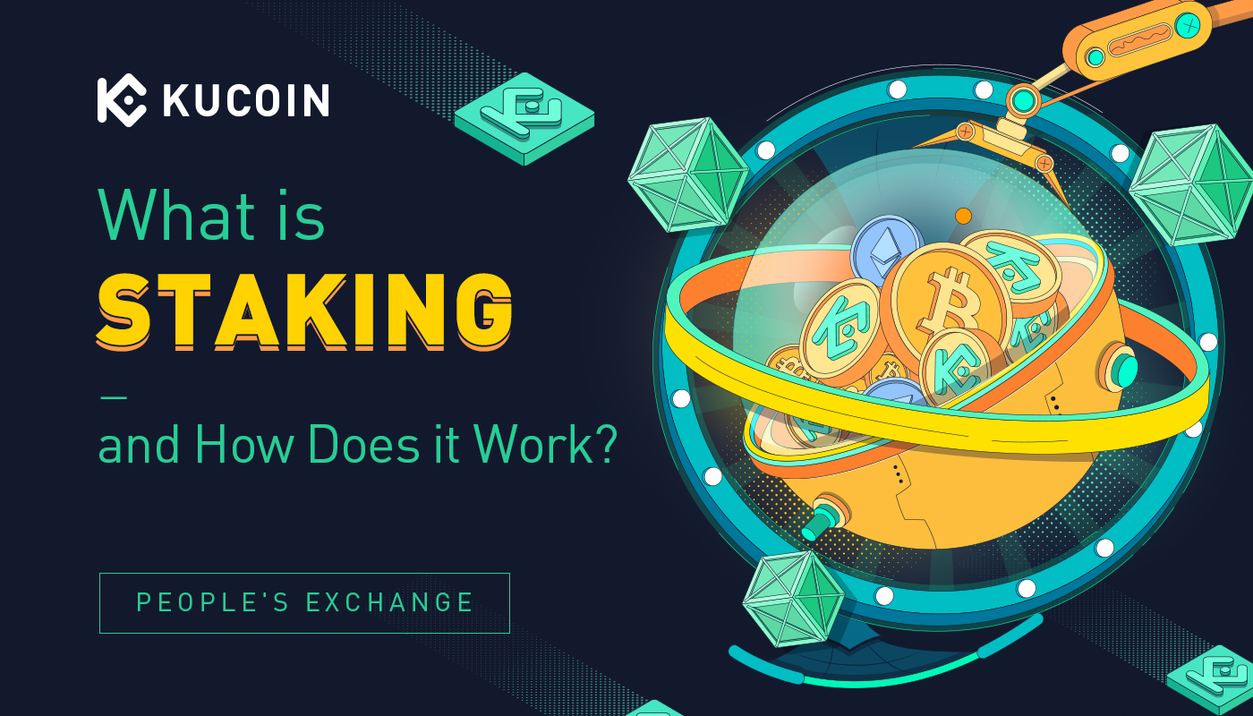
Source: staticimg.com
The allure of quick riches in the crypto world can be incredibly tempting. However, some projects are built on deception, promising unrealistic returns while ultimately defrauding investors. These scams, often disguised as legitimate staking opportunities, fall under the categories of rug pulls and Ponzi schemes, both of which prey on investor greed and naivety. Understanding the characteristics of these scams is crucial for safeguarding your investment capital.
Characteristics of Rug Pull Scams
Rug pull scams are characterized by a rapid and sudden disappearance of a cryptocurrency project’s team and assets. These projects typically start with high-profile marketing and promises of substantial returns, but their ultimate goal is to quickly gather funds from unsuspecting investors and then vanish. Often, these schemes lack legitimate backing, and the team’s identity is opaque or misleading.
High crypto staking rewards often seem too tempting to ignore, but be cautious! It’s crucial to understand that seemingly extraordinary returns might mask hidden risks. To safeguard your investments, implementing robust security measures, like those detailed in the Best Practices for Securing Your Cryptocurrency Wallet Against Threats , is paramount. Remember, while the allure of staking rewards is strong, due diligence and a focus on security should always be your top priority to avoid falling victim to potentially fraudulent schemes.
This absence of transparency and accountability creates a breeding ground for fraudulent activity.
Examples of Crypto Staking Schemes That Were Rug Pulls
Numerous crypto staking schemes have been identified as rug pulls. One prominent example involved a project promising exceptionally high returns on locked-up cryptocurrency. Initial investors saw impressive returns in the early stages, which only fueled further investment. However, the project abruptly disappeared, leaving investors with nothing. Another notable case involved a project presented as a decentralized finance (DeFi) staking platform, offering seemingly lucrative returns.
But, after a period of accumulating investor funds, the team vanished, leaving behind a trail of defrauded investors.
How Rug Pulls Exploit Investor Greed and Naivety
Rug pull scams capitalize on the human desire for quick profits and the inherent naivety surrounding new technologies. The lure of high returns and promises of passive income creates an environment where investors overlook critical red flags. Many individuals are drawn into these schemes by misleading advertisements and social media campaigns. The emotional aspect of potential financial gain often clouds judgment and rational decision-making.
Methods Employed in Rug Pull Scams to Deceive Investors
Rug pull scammers employ various deceptive tactics. These include false promises of unrealistic returns, inflated marketing campaigns, and the use of social media influencers to promote their schemes. They often use complex jargon to mask their fraudulent intentions, making it difficult for ordinary investors to detect red flags. The use of pseudonyms and anonymous platforms further obscures the identities of the individuals behind the schemes.
Furthermore, they frequently use fake audits and endorsements to lend a veneer of legitimacy to their projects.
Case Study: A Crypto Staking Project That Was a Rug Pull
Consider the example of “Project Chimera,” a crypto staking platform that promised exceptional returns on staked cryptocurrencies. Early investors reported significant gains, and the project attracted considerable attention through aggressive marketing. However, the project’s team vanished without a trace shortly after accumulating substantial funds from investors. Project Chimera’s characteristics mirrored common rug pull tactics, including unrealistic promises, lack of transparency, and rapid accumulation of funds before disappearing.
This highlights the importance of thorough due diligence before investing in any crypto staking opportunity. The absence of a clear business plan, transparent ownership, and verifiable audits should raise serious concerns for any potential investor.
Conclusion
In conclusion, while crypto staking can offer potential rewards, it’s essential to approach it with caution. Thorough research, careful evaluation of platform legitimacy, and awareness of hidden risks are paramount. Don’t be swayed by unrealistic promises; instead, prioritize transparency, security, and a realistic understanding of market volatility. Remember, due diligence is key to avoiding the pitfalls and maximizing the potential benefits of crypto staking.
Expert Answers
What are some common misconceptions about high staking rewards?
Many people assume that higher staking rewards automatically equate to better returns. However, this isn’t always the case. Often, high rewards are a tactic to attract investors, while the underlying platform or project may have significant vulnerabilities.
How can I assess the credibility of a crypto staking platform?
Thorough research is crucial. Look for established platforms with a strong track record, transparent operations, and positive community feedback. Examine their security measures, audit history, and the experience of past users.
What are the typical signs of a fraudulent crypto staking scheme?
Look for unrealistic promises, lack of transparency regarding fees, and vague or inconsistent information about the project. Unverified platforms, a lack of regulatory oversight, and high-pressure sales tactics are also red flags.
How can I protect myself from market volatility when staking?
Diversify your investments across different cryptocurrencies and staking platforms. Understand the risk profiles of different projects and consider your risk tolerance. A well-defined investment strategy can help mitigate potential losses due to market fluctuations.

